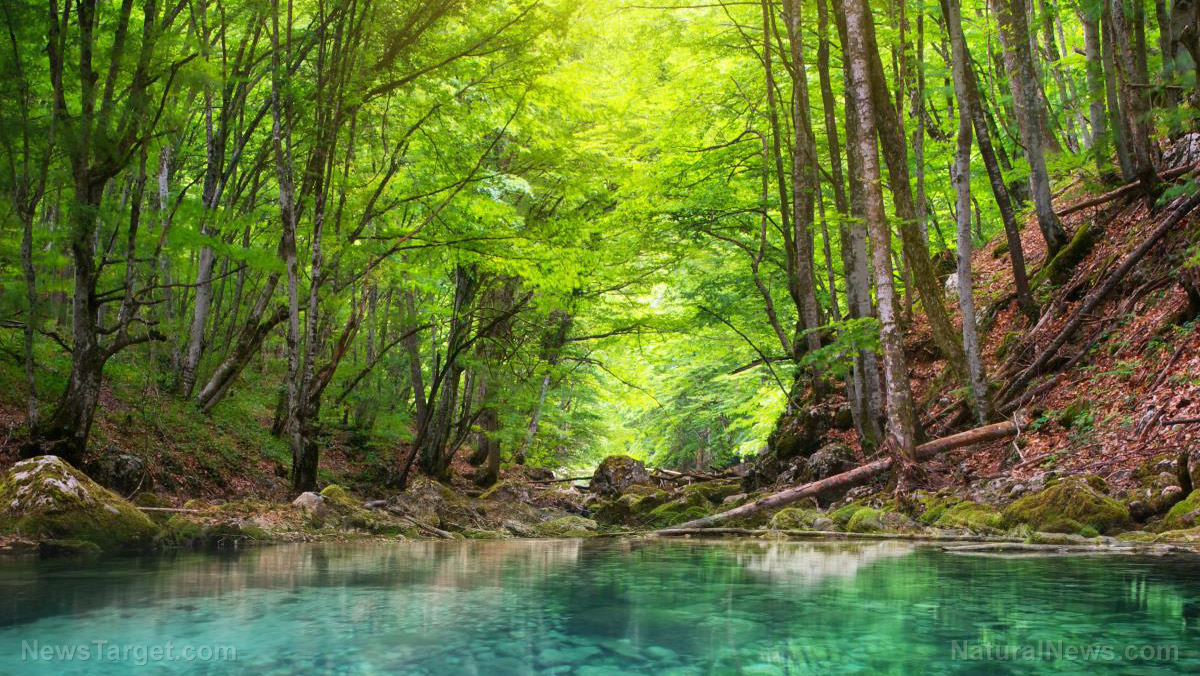Preserving riverside forests by connecting fragmented habitats may conserve biodiversity, ecosystems
03/26/2018 / By Zoey Sky

Aside from protecting various endangered species, the conservation of river-floodplain ecosystems is another challenge that experts are trying to address in the 21st century.
According to a group of researchers from the University of Tsukuba in Japan, landscape genetics can be used to help sustain threatened ecosystems.
The high soil moisture in forests on the riverbanks or along streams is one reason for the thriving plant and animal life within them. These areas are crucial to “maintaining water quality, preventing erosion, and [providing] important habitat for wildlife.”
However, a lot of these riparian (refers to wetlands found near rivers and streams) forests are now fragmented or developed because they are situated by the waterside. (Related: Study shows that a loss of biodiversity can put an entire ecosystem at risk of extinction.)
For example, rivers are used in transportation, and this has resulted in these forests being turned into either agricultural or residential areas. Flood prevention and control measures are also causing fragmentation in several sites. This fragmentation significantly influences the ability of plants and animals to move freely. It also affects other different ecological processes, like nutrient and gene flow.
Taking measures so these forests stay connected with each other by setting up “corridors,” or areas of habitat that link fragmented habitats is crucial to preserving these ecologically important sites. But data on how to enforce a network of these corridors for maximum effectiveness is limited, particularly for river-floodplain ecosystems.
A team of scientists, led by Dr. Ikuyo Saeki from the University of Tsukuba, shared that one way to determine which candidate areas “to be established, preserved, or restored as riparian forest corridors,” is through forest fragmentation on gene flow.
The researchers studied gene flow in the endangered maple, Acer miyabei, via landscape genetics. This method is an effective and popular tool utilized for conservation projects.
Landscape genetics combines population genetics and landscape ecology to analyze how recent landscape changes, like habitat fragmentation, have influenced the genetic diversity of species.
A. miyabei can only be found in “rare and undisturbed lowland floodplains in northern Japan.” However, the tree’s population is dropping because of fragmentation and habitat loss. In the past five decades, the majority of the flat lowlands and natural forests have mostly been turned into urban and agricultural properties.
Insects pollinate A. miyabei, and water and wind disperses its seeds. Due to its longevity, researchers have been able to compare genetic variation among young/small and mature/large specimens.
For this study, trees were classified as either young or mature by measuring the diameter of the largest stem at breast height (DBH). Results revealed that young trees had a smaller DBH compared to older trees.
Researchers gathered leaf tissues for DNA extraction from 290 trees at 13 sites located in seven river basins. They then obtained a DNA genotype for each tree.
The DNA genotype was compared among the 13 populations. It was also used to study the features of small and large trees within each population through advanced landscape genetic techniques.
Based on the results of the study, the small tree groups had a higher level of genetic differentiation compared to the large tree groups. This implies that smaller/younger trees are more prone to greater genetic isolation than larger/older trees because of recent forest fragmentation.
Due to the reduced gene flow between younger populations of trees, they share fewer variant forms of a gene called alleles. This occurrence could be the result of pollination, which is the tree’s method of reproduction. Younger trees are mainly pollinated by Diptera (flies) that reproduce in leaf litter. This suggests that the loss of forests possibly reduces gene flow through pollination.
The study also showed that surrounding forests and forests along rivers are crucial for preserving A. miyabei’s gene flow. Dr. Saeki concluded that remnant populations of A. miyabei are essential reservoirs of genetic diversity and that their habitats must be preserved.
To advocate connectivity, the study suggests protecting forests along rivers and the forests surrounding them. They noted that areas near genetically isolated populations must be prioritized.
Dr. Saeki hopes that the results of the study can be used to determine which candidate areas must be rehabilitated or protected as corridors that will preserve other riverside forests in the future.
Fast facts on Acer miyabei
- Common name: Miyabe Maple
- Family: Aceraceae
- Genus: Acer
- Type: Broadleaf
- Acer miyabei (A. miyabei) was named after the Japanese botanist Kingo Miyabe (1860-1951). Miyabe discovered the tree at a stop during a train ride, and Karl Maximowicz described the tree in 1888.
- A. miyabei is endemic to northern Japan, specifically in Hokkaido Island.
- A broadleaf deciduous tree, it can grow from 65 to 80 feet (ft) [20 to 25 meters (m)].
- Gray-brown to orange-brown in color, the tree is corky when young. A. miyabei turns broken and fissured. It eventually becomes scaly with a fluted trunk.
Read more articles on environmental studies and how we can help preserve forests at Environ.news.
Sources include:
Tagged Under: A. miyabei, Acer miyabei, climate science, conservation, Ecology, ecosystems, environ, environment, forest conservation, forests, fragmented habitats, genetic diversity, habitat fragmentation, landscape genetics, research, riparian forest, riparian forests, river floodplain ecosystems, rivers, riverside forests, trees
RECENT NEWS & ARTICLES
COPYRIGHT © 2017 ENVIRON NEWS




















